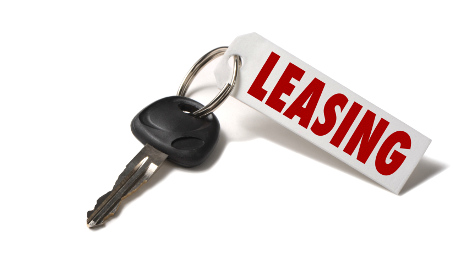Along with highlighting company successes since new chief executive officer Edgars “Edz” Sturans took control last September, BillingTree also explained the potential benefits of leveraging “omnichannel” platforms.
BillingTree head of corporate marketing Dave Yohe said the “omnichannel” bandwagon is gaining steam because the term is a buzzword and is spreading throughout the business world.
“It often applied to the consumer-driven retail industry as a method of improving sales through a more seamless, cross-channel shopping experience,” Yohe said. “See it on the Web; buy it on the mobile; collect it in the store.”
Yohe pointed out that the retail sector is seeing a swell in new payment methods such as Apple Pay, Bitcoin and Google Wallet, meaning consumers are faced with a wide variety of ways to pay for their goods. He added that offering their customers more extensive ways to shop and pay whenever, wherever and however has become a competitive advantage for retailers.
So what can the payment collection industry learn from the retailers clamoring to provide their customers with a perfect 'omnichannel' experience?
“For those taking payments it's not just about people wanting to pay their bills through their preferred method, but, that people are more likely to pay their bills,” Yohe said.
Value of Omnichannel for Accounts Receivables
By omnichannel in the accounts receivable market, BillingTree indicated that term mean everything from ACH to card payments; agent, Web, mobile and IVR — plus the growing use of virtual negotiation.
Yohe insisted that adopting new technology and payment methods can give consumers more options to pay their bills, which in turn leads to more vehicle installment contracts staying current.
In the debt world, BillingTree is seeing more settlements arriving because of this technology.
BillingTree found that one of its ARM industry clients, National Recovery Solutions (NRS), saw a 15-percent increase in settled payments and reduced delinquencies by 40-percent after implementing virtual negotiator technology.
But turning back to auto finance, how might omnichannel technology provide assistance? Yohe explained how by using NRS as an example.
“Consumers could log in and see their billing information,” Yohe said. “For each consumer, the technology automatically individualized repayment terms in real-time, allowing them to negotiate a payment plan to suit their situation. The agentless technology runs 24/7, so consumers don't have to explain their need for any payment terms with a live agent.
“The key takeaway here is that NRS gave consumers more ways to pay. This improved their client’s customer experience and resulted in more settled payments and reduced delinquencies,” he added.
Multichannel Doesn't Mean Omnichannel
BillingTree emphasized that simply offering a wide range of payment methods doesn't necessarily mean a company has found the Holy Grail. The company explained that for an experience to be defined as truly 'omnichannel', the consumer must be able to move freely between ‘channels’ and payment methods.
“Just because a consumer receives a notification letter of an outstanding bill doesn't always mean they plan to call or reply via mail,” Yohe said. “It may be more convenient to pay online, or contact the agency’s IVR by phone to settle the outstanding account, or even negotiate a payment plan.”
Turning back to its client example, BillingTree indicated that NRS realized it needed to promote the availability of its new online virtual negotiation across other channels. NRS accomplished this task by including the website link in all paper communication with consumer and enhanced its website to make visitors more aware of the range of payment options available to them.
“It ticked all the boxes for good customer service while using technology to improve its settlements and reduce delinquencies,” Yohe said.
Lower the Effort; Increase the Payment
BillingTree pointed out that the Corporate Executive Board recently reported 88 percent of consumers are more likely to spend more because of low-effort interaction.
Yohe added that similarly the less effort required by a consumer to pay a bill, the more likely they are to attempt to pay it.
“At BillingTree, we’ve seen how reducing end user effort can increase payments,” he said.
Full service collections agency Diversified Consultants, Inc. (DCI) recently implemented Interactive Voice Response (IVR) technology after it found it was missing 70 potential payment calls outside office hours every night.
“DCI saw a swift return on investment after implementing IVR,” Yohe said. “The company significantly increased payments and saved the equivalent cost of eight agents. Agent time is now freed up to resolve more complex issues and the IVR has improved overall customer service by lowering end user effort
“Consumers can now pay at their own convenience regardless of office hours,” he went on to say.
BillingTree stressed that its clients find that adopting new technologies such as virtual negotiation and IVR are cost-effective and offer agencies a considerable ROI.
“One thing is for sure,” Yohe said. “by simply offering consumers a single option to pay, such as agent assisted, agencies are limiting their chances of making a collection.”
BillingTree Delivers Growth, Technology, Added Value During first Six Months Under Sturans
In other company news, BillingTree highlighted that the firm experienced continued growth during the past six months and throughout 2014 as the company welcomed new clients and further expanded its payment offerings across the ARM, auto finance, credit union and healthcare industries. The cross-industry growth came during a period of leadership transition at BillingTree following the August appointment of new chief executive officer Edgars “Edz” Sturans.
BillingTree also saw increased adoption of new payment technologies as customers looked to enhance their existing payment processing by integrating solutions such as interactive voice response, virtual negotiation and data feed technology.
Alongside expanding product adoption, BillingTree during the fourth quarter announced a new strategic partnership with DealerClick offering their auto finance customers access to a wider suite of payment solutions.
Under the guidance of Sturans, BillingTree continued enhancing its customer-first program to ensure even greater levels of customer service and support. Advancements included:
— New support webpage
— Expanded communications
— Complementary customer access to Compliance Coach and Compliance Central
Plus the company will again be covering costs of the annual NACHA Rulebooks for ACH processing customers.
BillingTree also ran a series of webinars to share information regarding payment processing technology and services, including advice on how to remain compliant under the ever-increasing scrutiny of regulatory bodies such as the Consumer Financial Protection bureau.
BillingTree's commitment to industry best practice continued with the December addition of the 2014 assessment in line with the Health Information Portability and Accountability Act (HIPAA) Security Rule. This product is geared to compliment the completion of the examination on Statement on Standards for Attestation Engagements (SSAE) No. 16 and PCI Compliance certifications achieved earlier in the year.
“It’s been a busy and successful six months since joining the BillingTree team and I am pleased to have begun my tenure by adding even more value for our clients — while developing and increasing the adoption of new payment technology,” Sturans said.
“The culture at BillingTree plays a vital role in helping our customers grow and we’ve got many more exciting innovations in development that are coming in 2015,” he continued.
As well as steering the company through a successful leadership transition, Sturans continued to emphasize BillingTree's long-standing tradition of working with local charities. Charitable work includes support for:
• Florence Crittenton’s Teaming Up For Girls Luncheon.
• Season for Sharing, the annual holiday campaign of The Arizona Republic, azcentral.com and 12 News, which is a donor-advised fund of the Arizona Community Foundation.
• St. Mary’s Food Bank and Feed My Starving Children as BillingTree employees continue the long-standing company volunteering policy, supplying three paid office-hours per month per staff for charitable causes. This employer-paid volunteer time includes support totaling around 1,800 man-hours per year.
• Phoenix Children’s Hospital: A donation, event sponsorships and volunteer hours continue to help the young patients at the hospital.
The National Automotive Finance Association is again enhancing its annual Non-Prime Auto Finance Survey; this time by collaborating with the American Financial Services Association.
The NAF Association and AFSA announced this week they will be working jointly to orchestrate the only survey specifically focused on the subprime auto financing market. For the past 18 years, the results have been used by companies for benchmarking, identifying trends and supporting and guiding policy decisions.
The survey is conducted by Benchmark Consulting International, which gathers and aggregates all the survey data confidentially. The data is gathered via a Web survey and incorporates Experian and Factor Trust data extracted from their traditional and alternative data credit reporting databases.
The two companies stratify and analyze the data according to their non-prime market segments specifically for the survey. This combination of information provided by AFSA and NAF Asscoation members along with Experian and Factor Trust data will provide a comprehensive overview of the industry.
Participating companies will be given a free copy of the final report.
“The NAF Association has always been motivated to get the highest level of non-prime auto finance company participation in the survey,” NAF Association executive director Jack Tracey told SubPrime Auto Finance News. “We reached out to AFSA with the thought that with the two organizations behind the campaign we could increase participation.
“Historically we’ve gotten around 25 companies submitting data, but we felt that if we could increase the number of companies submitting information that the survey results would more accurately reflect industry trends,” Tracey continued. “The NAF Association enjoys the opportunity to work with AFSA when the combination of our efforts benefit the auto financing industry.”
When contacted by SubPrime Auto Finance News, AFSA shared a similar sentiment.
“We believe the Non-Prime Auto Finance Survey is an excellent resource, and we hope that making it a joint effort between AFSA and NAF will prompt the participation of more auto finance companies,” AFSA president and chief executive officer Chris Stinebert said. “Increased participation will enhance the value of the survey and the aggregated data it provides the industry.”
For more information or how to participate, contact Tracey at (410) 865-5431 or jtracey@nafassociation.com.
AFSA Updates White Paper on Vehicle Franchise Ancillary Product Legislation
In other news, AFSA’s state government affairs committee issued a white paper earlier this week focusing on a trend in vehicle franchise legislation that affects the relationship between manufacturers, sources of vehicle finance and dealers relating to the sale of ancillary products. These products include vehicle service contracts, guaranteed asset protection (GAP) waivers and extended warranties.
AFSA highlighted the paper summarizes legislation proposed in New Jersey and Virginia and enacted in Florida, Mississippi, New York and Oklahoma during the last year. The bills include provisions prohibiting a manufacturer (or affiliated financial institution) from coercing or requiring a dealer to sell or sell exclusively their ancillary products or take action against a dealer for offering third-party products.
In some cases, AFSA noted that the provisions prohibit captive finance companies from offering exclusivity incentives to the dealer, offering finance terms to a consumer for an affiliated product that are not offered at the same time for a similar third-party product and/or requiring the dealer to disclose to the consumer when it is a third-party product.
AFSA members can download the white paper by going to this website.
New analysis by The Pew Charitable Trusts showed again how much that monthly payment is critical to formulating a vehicle installment contract.
The report indicated the majority of American households are living paycheck to paycheck because analysts discovered 55 percent are savings-limited, meaning they can replace less than one month of their income through liquid savings.
Erin Currier, director of Pew’s financial security and mobility project, explained that even as the national economy continues to recover from the Great Recession, most U.S. families remain financially fragile. Authors of Pew’s report titled, “The Precarious State of Family Balance Sheets,” drew from multiple nationally representative data sources to develop what they believe is a clear picture of household financial security in the United States.
“Our analysis finds that many American families, even those with relatively high incomes, are walking a financial tightrope,” Currier said.
“Many have little if any cushion to absorb an unexpected financial setback. It’s a precarious state that threatens not just financial security, but upward mobility,” she continued.
Because families are so financially pinched, they’re stretching terms to keep their vehicle installment contracts affordable. According to the latest information available from Experian Automotive that took a glimpse of data from October and November, the volume of contracts ranging between 61 to 72 months jumped 40.3 percent year-over-year. And the increase for contracts lasting between 73 and 84 months climbed 25.7 percent year-over-year.
Meanwhile, Experian mentioned the average monthly payment for a new vehicle stands at $479, while for a used model the payment sits at $355.
More findings in the Pew report revealed widespread financial fragility, including
— Although income and earnings have increased over the past 30 years, they have changed little in the past decade. The typical worker had wage growth of 22 percent between 1979 and 1999 but just 2 percent from 1999 to 2009.
— Substantial fluctuations in family incomes are the norm. In any given two-year period, nearly half of households experience an income gain or drop of more than 25 percent, a rate of volatility that has been relatively constant since 1979.
— The Great Recession eroded 20 years of consumption growth, pushing spending back to 1990 levels. As a result, the net increase in average annual household spending is just 2 percent since 1990.
— Even when pooling all of its resources — including from accounts that are potentially costly to access, such as retirement accounts and investments — the typical middle-income household can replace only about four months of lost income.
— Most families face financial strain across all balance sheet elements: income, expenditures, and wealth. Fully 70 percent of households face at least one of these problems, with many confronting two or even all three.
— The report concludes by noting that policymakers should focus on policies and programs that support asset accumulation, which can help meaningfully improve American families’ financial standing.
Sources for the data in the report include the Congressional Budget Office, the U.S. Census Bureau’s Current Population Survey, the University of Michigan’s Panel Study of Income Dynamics, the U.S. Bureau of Labor Statistics’ Consumer Expenditure Survey, and the Federal Reserve Board’s Survey of Consumer Finances.
There’s an incorrect assumption that many Americans — and potentially your customers and other auto-related consumers — are making when it comes to their credit score standing.
In results of its national survey of renters revealing “widespread confusion” about what is actually included in a consumer’s credit history, TransUnion found that 48 percent of renters incorrectly assume that rental payments are automatically sent to credit bureaus.
The survey also showed that 53 percent believe cable/internet fee payments are regularly reported to credit bureaus, while 54 percent and 52 percent believed the same thing about utility fee payments and cell phone bill payments, respectively. Each of those assumptions is incorrect, TransUnion said.
Interestingly enough, less than a third (29 percent) thought that mortgage payments are among the data regularly sent to credit payments (which they are).
“Most consumers report paying rent on time, but many don't realize that until now these payments are not boosting their credit histories,” said Ken Chaplin, senior vice president of TransUnion. “Renters should be aware that property managers are starting to report payments to credit bureaus and they should be consistently monitoring what is being registered on their individual report.”
And that fact may actually benefit many consumers, as TransUnion’s stats suggest. For starters, 79 percent say they put greater priority on making rental payments over all monthly bills.
And 77 percent of respondents believe they would see a potential boost in their credit score if rental payments were reported to credit bureaus. (Meanwhile, 68 percent believed the same regarding cable bills; 67 percent said the same of cell phone bills; 69 percent said the same of utility bills.)
But it is not just the renters who benefit, either: over half of renters said if they were certain the landlord reported the rental payment to credit bureaus, they would be more apt to choose that property.
“Expanding the share of property managers who report rental payments will produce more accurate information that truly reflects how consistently consumers meet their financial obligations,” Chaplin said. “It will benefit renters who want to help their credit scores and landlords who want to attract renters who pay rent on time.”
The newest white paper from Equifax highlighted five reasons why credit scores might not be most accurate or comprehensive way to access a borrower’s qualifications — especially in subprime.
Those reasons included:
— Credit scores reflect only a portion of the full picture that affects applicants’ credit worthiness.
— Insufficient detail can result in the wrong terms or risk level being placed on deals, denying qualified applicants or inadvertently approving excessively high-risk borrowers.
— Applications frequently contain inflated or misrepresented information, proving a misleading view of the associated risk.
— Verifiable insights into historical job tenure and disruptions which can be highly predictive of ability to pay, are typically not included or inaccurate.
— Because underwriters and funders try to close deals quickly, manually verifying income and employment is inefficient and often fails to identify inaccurate data.
With those elements in mind, Equifax senior director of product marketing Jennifer Reid pointed out that some of the top reasons for contracts being returned to dealers are still:
— A lack of verification of stated income.
— Missing or inaccurate documentation to meet stipulations.
— A failure to meet approval terms and out-of-policy contracts.
In its latest white paper from Equifax titled, “Trust, But Verify: What Research Reveals about Subprime Vehicle Loan Performance When The Work Number Data is Used,” Reid discusses how database-supported verifications can provide finance companies and dealers greater accuracy, accountability, transparency and detailed insight into borrowers' qualifications while also providing operational improvements.
In addition, the white paper includes research illustrating the significance of verifications by analyzing the impact of income, employment tenure, pay frequency and employment disruptions on borrowers' credit-worthiness.
That white paper can be downloaded here.
Reid and other members of the Equifax team will be on hand during Used Car Week, which begins on Nov. 10 at the Red Rock Casino, Resort and Spa in Las Vegas.
Where discussions about underwriting, trends and more will be a focal point will be during the SubPrime Forum, an event orchestrated in partnership with the National Automotive Finance Association.
This three-day conference will provide data, knowledge, insight and powerful business networking opportunities to spur innovation and drive growth in the growing subprime auto finance marketplace. Presented by SubPrime Auto Finance News and SubPrimeNews.com, and in affiliation with the NAF Association, the event will offer a best-in-class forum for executives and thought-leaders in the auto finance vertical.
The SubPrime Forum is set for Nov. 10 through Nov. 12 at the Red Rock Casino, Resort and Spa in Las Vegas. It’s a part of Used Car Week, which includes the CPO Forum, the Re3 Conference and the National Remarketing Conference.
All member-company staff of the NAF Association are $100 eligible for a discount of off the standard registration fee for the SubPrime Forum. Use discount code NAF2014 when registering.
Click here for additional information regarding the SubPrime Forum, including the agenda, scheduled speakers and exhibitors.
Officials from eLEND Solutions highlighted the seven main components of CreditPlus, the next generation of their online, interactive credit application platform.
Launched on Monday, the company explained CreditPlus can instantly pre-approve shoppers based on dealer-defined credit criteria and can provide shoppers with direct, upfront access to dealership financing sources and real near-final terms of approval from multiple lenders, all of which are controlled by the dealer.
With CreditPlus, officials insisted that for the first time, dealers are able to match a buyer’s credit profile with the right vehicle and the right financing program before the customer has even started the test drive.
Pete MacInnis, chief executive officer of eLEND Solutions emphasized this solution can facilitate a more equal exchange of information between consumer and dealer and the structuring of a more profitable deal.
“Auto dealers are looking for ways to convert online shoppers to in-store buyers … faster,” MacInnis said.
“Today’s shoppers expect more information, multiple choices, transparency and immediate gratification,” he continued. "CreditPlus, powered by a patented rules-based loan decision engine, allows the customer to select from a menu of approved near-final finance terms, such as APR, term, monthly payment, down payment) from multiple lenders — all controlled by the dealer.”
Here are the seven major elements in how CreditPlus is geared to operate:
— Better consumer experience: The company indicated CreditPlus features an easy, short interactive application that is geared to be 100 percent mobile and tablet adaptive. Applicants not only can get approved for financing in seconds, but they can also view their credit score and pick their payments — all of which is designed to drive engagement and accelerate conversion of online shoppers into showroom buyers.
— Better dealer controlled experience: CreditPlus can offer dealers numerous application configuration options, including videos, vehicle detail image selections and lead management tools. The company stressed that dealers are in complete control of credit criteria and payment terms displayed to the customer, which can also can include dealer mark-up, doc fees, service contracts and more.
— Electronic lender rate card: The company pointed out CreditPlus is powered by a rules-based loan decision engine that can aggregate a limitless universe of finance company programs based on credit, stability and ability. Results from real multiple loan underwriting rules, APRs, program guidelines and more are available instantly to the dealer and the customer.
— Communication and system integrations: CreditPlus can drive engagement via automated email and text communications, chat integrations, automated system escalations and alerts — all designed to keep dealers in touch with ready-to buy online shoppers and convert them into showroom buyers faster.
— Security: eLEND Solutions is EI3PA Certified, the highest level of security certification in the industry, offering the most secure environment for collecting, storing, retrieving, modifying or auditing applications.
— Compliance and CFPB protection: Officials contend CreditPlus’ rules-based loan decision engine does not support decisions/terms that could be considered discriminatory or subjective. They added eLEND’s platform includes loan decision reporting and audit trail processes that can be made transparent to dealers, lenders and the Consumer Financial Protection Bureau.
— Industry Neutral Solution: The company noted eLEND Solutions’ credit platform, deal structuring decision engine and API platform is agnostic and compatible with any dealer desk tool and can be integrated seamlessly with all dealer websites and service providers, including inventory management and CRM providers, finance platforms and dealer management systems.
“We’ve witnessed two decades of innovation in online car buying, but the financing process remains outdated and low-tech. This lack of innovation has not only cost dealers time and money, but it has also seriously alienated consumers, who increasingly demand online transparency in everything they do,” MacInnis said.
“CreditPlus’ real, upfront loan terms are a missing piece of the car-buying revolution, bringing dealers more high-quality credit app leads, while slashing the current 3 to 4 hour sales process,” he went on to say.
MacInniss also highlighted consumer adoption of smart, online credit application solutions is remarkably high, according to a Dealer.com study using eLEND’s first-generation, interactive online credit application, Get Pre-approved in Seconds (GPIS).
The study showed that GPIS generated a 2,000-percent uplift in submitted credit applications vs. other standard long-forms submitted on dealer websites. The study mentioned that 50 percent of consumers who start the GPIS credit application complete it versus a mere four percent who complete the process with the traditional static application.
Furthermore, according to a recent IHS Automotive custom analysis of 1,400 dealers nationwide showed that of those consumers that submitted eLEND’s short-form credit application, 54 percent purchased a vehicle and those purchasing from the intended dealer saw average buy rates of 28 percent.
Performance was dramatically higher than the 6 percent to 8 percent closing ratio for standard third party leads, according to Cobalt.
Norm Reeves Honda Superstore general manager Brad Mugg said, “eLEND’s online credit application has been the best lead conversion tool for our dealer group for the past eight years.
“We expect that CreditPlus will drive even higher submit-to-sales conversions and will help us sell and finance more cars, with more speed, transparency and profitability than ever before,” Mugg continued.
CreditPlus is available to U.S. dealers immediately, and store managers can review a company demo here.
According to the credit reporting agencies, roughly 56 percent of Americans have what can be categorized as nonprime to subprime credit. A recent Equifax report indicated that only 44 percent of Gen Y customers have prime credit, while the rest suffer under the blanket definition of nonprime.
But there’s a catch.
These figures are skewed by the high number of Gen Y borrowers with thin files and high student loans. In other words, everyone gets lumped into the same category no matter what the reason.
This has created a bit of confusion among dealerships in differentiating actual nonprime customers with those who simply look nonprime on paper. As a result, it’s brewed up a perfect storm of discontent among Gen Y auto buyers who loathe the idea of spending hours trapped inside a dealership awaiting credit approval.
Even Gen X customers are growing tired of the same old worn out methods of buying cars. As a result, there’s been a spike in the growth of online services geared at helping buyers through the experience with as little pain as possible.
Old Ways Die Hard
Recently, Penske Automotive Group announced plans to compete with CarMax for the lion’s share of the new market of online used-car sales. Nonprime car shoppers represent the group most likely to benefit from this move, both in time saved and the volume of lending terms granted.
Meanwhile, still stuck in the primordial muck and unwilling to take that first evolutionary step forward are the old-fashioned car dealers of the world. For these dinosaurs, the idea of adapting their way of doing business is about as unthinkable as a T-Rex sprouting wings and taking flight. Their collective mindset expresses one simple, dangerous thought: Gen Y customers will have to adapt to their antiquated methods, or take it elsewhere.
This lack of willingness to evolve — to work out ways of bringing speed and ease to auto buying transactions — isn’t surprising. These voices of the past have been wielding the “if it doesn’t fit, force it” mindset for ages.
But where will these same creatures of habit be a few years down the line when allegations of “strong arm” sales tactics arise from agencies like the Consumer Financial Protection Bureau, filed by customers who felt coerced into buying something they couldn’t afford — all because of a lack of a streamlined, efficient process?
It’s an attitude of defiance and resistance we’ve all seen before.
Back in the old days when menu selling was first introduced, many reacted as if the sky was falling. It was as if they couldn’t wrap their heads around the concept.
They had trouble comprehending why anyone in their right minds would want to embrace a culture of transparency in auto sales.
Change didn’t happen overnight. But before long, those who implemented menu selling realized previously unseen levels of product penetration and before long, there was no looking back.
Current Landscape
Fast-forward to today, where we find ourselves at a similar crossroads — introducing even more new-age concepts that will no doubt turn all those dealerships still clinging to their tried and true methods on their backs.
Making it easier for customers to purchase, regardless of whether they’re prime or subprime, is no longer an issue of “if” but a question of “when?”
Efficiency is the driver of sales. Reducing the time a customer spends buying a car doesn’t just mean profits earned this month or this quarter, but years on down the line, as well.
On the other hand, taking too long to complete the F&I process can result in a lost sales, reduced profits, eroding customer loyalty and legal scrutiny.
Savvy dealers such as CarMax and Sonic Automotive know this. They have seen the pot of gold at the end of the rainbow, and they’re lunging for it, willing to make adaptive changes in order to gain market share.
Although that share today only represents 11 percent, that figure is growing. With more available resources than ever before, car buyers are flocking to the likes of these transparent dealers in the hopes of finding the best deals possible in the shortest amount of time.
Chief among the efforts of the likes of CarMax and Sonic is the understanding that individual customers are more than simply a beacon score. These guys “get it.”
Which leads to the obvious question: if the giants of the auto industry are giving in to customer demand because they see it as a profitable pursuit, shouldn’t this concept cause the doubters to sit up and take notice?
The Bottom Line
Dealerships today can no longer classify buyers as nonprime or subprime based on their beacon scores alone.
Today, a 640 score could represent 10 different variations of credit history. With a growing number of lenders changing their methods to examine individual circumstances — such as thin or nonexistent credit files — the onus is now on dealerships to do the same.
How is this accomplished?
First, by admitting that a change is necessary. Next, it requires the implementation of a streamlined process by which the issue of credit approval is broached long before a customer decides on a particular car.
By getting all those ducks in a row, and by landing customers on cars they can actually qualify for, dealerships can slash away at the extensive amounts of time nonprime customers have to spend on the lot.
In order to make it all come together, dealerships must take a long hard look at their processes and ask themselves some difficult questions.
• Are they adding unnecessary time by landing customers in cars before asking prudent fact-finding questions that can give insight into the buyer’s creditworthiness?
• Is the sales staff trained on the best methods of obtaining standard credit criteria?
• Can methods be employed to bring F&I into the process sooner, rather than later?
• What steps are being taken to understand customer budgets against lender guidelines?
There’s an irony present throughout all of this.
As recently as five years ago, dealers across the country swore up and down they’d never put their inventories on third-party websites. One look around at sites like AutoTrader.com or TrueCar.com shows a very different story today.
Perhaps in another five years, it will be commonplace for dealerships to adapt their processing strategies in a manner conducive to a more streamlined, painless in-dealership experience.
The race begins today. Those who aren’t already toeing the line will be left behind in the dust kicked up by the competition.
Rebecca Chernek, who founded Chernek Consulting in 2001, has nearly three decades of dealership experience ranging from working with her father at their family-owned dealerships in Have De Grace, Md., to district manager for the AutoNation division of the JM&A Group. She can be reached at (404) 276-4026 or via email at becky@chernekconsulting.com.
Pre-qualified monthly payment marketing technology provider DriveItNow now offers dealer website hosts a comprehensive and compliant credit services solution for their customers. Officials highlighted the six major capabilities of this solution — DriveItNow’s Credit Center.
The company explained that since most consumers finance or lease their vehicles, today’s dealer websites provide a variety of what officials described as “disjointed and often conflicting” credit-related services. These services can include items such as a “get pre-approved” product, generic payment calculators, a search-by-payment option, trade-in valuations and full credit applications that require personal information.
DriveItNow president Tarry Shebesta pointed out these services are usually from different vendors that require the shopper to provide their information multiple times.
“DriveItNow’s Credit Center ties all auto finance-related services together through one simple-to-integrate website widget,” Shebasta said. “Online shoppers can easily access what they need in one place without having to provide personal information or complete multiple forms.”
At the core of the Credit Center platform is DriveItNow’s patent-pending pre-qualification payment quoting technology. Shebesta indicated that real monthly payments are quoted using the dealer’s finance company programs and the consumer’s actual credit bureau, without requiring a Social Security Number or date of birth or affecting the consumer’s credit score.
“Other industry services that quote monthly payments and finance rates are not always accurate or compliant and are not based on the consumer’s actual credit bureau,” Shebesta said. “Those services display best-case scenarios which may give shoppers an unrealistic expectation of what they can actually afford to buy.”
Shebesta also mentioned the Credit Center integration is simple, totally customizable and can give website providers that offer SEO/SEM services additional keyword marketing opportunities.
DriveItNow also displays fully compliant disclosures and works with compliance experts to ensure dealers comply with federal rules and regulations of the Fair Credit Reporting Act and Consumer Financial Protection Bureau.
DriveItNow’s Credit Center services include:
• Short-form finance application with instant pre-qualification
• Pre-qualified monthly payment buttons on vehicle inventory
• Shop-by-payment functionality
• Trade-in equity calculation
• OEM loan and lease special promotions
• Real-time “soft pull” full credit bureau reports
Shebesta also noted all Credit Center services can be accessed from various links throughout a website, within email marketing campaigns or social media.
“Other industry vendors are trying to play catch up as we continue to lead in this market segment,” Shebesta said. “Our 14 years of online experience as a direct-to-consumer finance company, and dealer, gives us the advantage in knowing what engages online shoppers. We don’t rely on surveys or focus groups.”
A mobile version of these services is also available and is compatible with responsive website platforms.
DriveItNow’s Credit Center is available to dealers, OEMs, classified and finance portals and website vendors.
For more information, visit www.DriveItNow.com or call (800) 223-4882, ext. 10.
In a monthly-payment driven world, leasing is on the rise to points never seen before, especially for contracts connecting new vehicles and consumers with prime credit. But Swapalease.com executive vice president Scot Hall gave the industry a question to ponder. What if finance companies considered leasing used vehicles — in particular, certified pre-owned models — to subprime consumers, particularly ones who are on the higher-end of the non-prime category?
Used-vehicle leasing still remains a small part of the industry’s book of business. Experian Automotive indicated used-vehicle leasing constituted just 3.19 percent of the entire leasing market in the second quarter, down slightly year-over-year. CNW Research determined there have been 692,218 used leases originated through the first eight months of this year. CNW’s data showed there were 705,180 used-car leases written through August 2013. In eight months of 2012, there were 705,027 used leases.
While those metrics all show slight softening for used-vehicle leasing, Hall again reiterated the potential that’s out there stemming from two key ingredients:
— Continuing rise in off-lease wholesale volume based on contracts written in the past two years.
— A population that has bruised credit but still the ability to make monthly payments.
“It would be a great thing for the entire leasing market overall, and looking more holistically, the entire auto industry overall. There are a lot of people who are going to be considered subprime that are still able to make a monthly payment, and they’ve just had a few hiccups and aren’t bad people at the end of the day,” Hall told SubPrime Auto Finance News during a recent phone interview.
“I think a lot of people lose sight of the fact that leasing is simply an alternative form of financing. You may choose to do a long-term installment loan; you may choose to do a short-term lease. But they’re all just options as a way to pay for that vehicle,” he continued.
“Why there hasn’t been more focus on subprime in the leasing segment, specifically, in the past? Frankly, that seems a little bit unusual that hasn’t been explored further,” Hall went on to say.
Hall also mentioned how the latest metrics from Swapalease.com shows the demand for leasing from subprime consumers.
Swapalease.com reported lease credit approvals during the month of August came in at 85.7 percent, the highest monthly level of 2014 and besting July’s rate of 81.0 pecent.
August marked the second straight month of improving lease credit approvals, and well above the 70-percent mark considered healthy on the Swapalease.com marketplace.
After dipping into a year-to-date average low of 64.5 percent in June, the annual tally is now up to 68.5 percent. The company believes a rise in subprime shoppers weighed down the credit approvals rate in 2014, as more shoppers in this credit profile have applied for a lease.
“We deal with a lot of different leasing companies, some directly, some indirectly. Each of those leasing companies has a little bit different credit process,” Hall said. “In most scenarios, the individual applying for credit is going to know within one or two business days if they’ve been approved to take over a lease. Some leasing companies as a result of not having as much focus on the lease-transfer process may take a little bit longer. It’s going to be a combination of notified directly or notified by mail. Really no differently than if they were looking into a loan or a lease initially at the dealership level.
“When we have a client who contacts us … it’s not uncommon for someone to think they don’t have the credit to do this,” he continued. “We don’t want to simply sign them up for our service and charge them a membership fee, knowing they don’t have a lot of chance for success to take over a lease. Instead, we want to push them over to our partner, ConsumerDirect.com.”
Swapalease.com works to help subprime shoppers elevate their credit profile through a program called Smart Credit and sponsored by ConsumerDirect.com.
“It’s a process and service that can help an individual learn more about what needs to be done to improve their credit and rebuild their credit and point them in the right direction,” Hall said.
Once these shoppers revitalize their credit they can re-enter the Swapalease.com marketplace and reapply for a lease assumption.
“We definitely have had success stories. At the end of the day, it’s a matter of severity,” Hall said. “Prime credit by most definitions is a 700 credit score and higher. Of course the higher the number, the better the credit. Anybody south of 700 in that range is going to be considered subprime.
“Generally speaking when someone has a score of 675, what they need to do to clean up their credit history and their portfolio is a lot less cumbersome than someone who might have a score in the high-500 range,” he continued.
“There’s really not a one-answer-fits-all. Depending on what someone has done in the past or more accurately what someone has not done in the past. It may take them longer to clean up that credit view,” Hall went on to say.
While Hall acknowledged it’s going to take quite an industry shift for leasing associated with subprime consumers or used vehicles to hit level experienced with new vehicles and prime customers, Hall insisted the potential is there to expand on the numbers seen by Experian and CNW.
“You’re going to have different levels of credit enter the market when you have that kind of growth,” Hall said.
Staff Writer Joe Overby contributed to this report.
Black Book isn’t just pitching its products and services to finance companies nowadays. Its analysts and staff are trying to emphasize to executives and managers who watch loan-to-value ratios and overall portfolio status about how much risk is building and how important it is to watch how long it will take for a borrower to return to an equity position.
In light of Experian Automotive highlighting second-quarter data that showed 24.1 percent of all new-vehicle loans and 14.1 percent of all used-car contracts contained terms ranging from 73 to 84 months, Black Book took a closer look at comparative collateral data in order to drill deeper into this trend. The company recently leveraged its Collateral Insight Engine technology to compare two different vehicles based on the exact loan terms of 72 months, 5-percent interest and a 120 percent loan-to-value ratio.
Based on the data from the example, Black Book indicated one vehicle achieved a positive equity position in just 37 months, a whole 15 months earlier than the other vehicle (at 52 months).
What’s more, the first vehicle had approximately $3,000 more equity by the 24th month versus that of the second.
Black Book vice president of analytics Anil Goyal explained to SubPrime Auto Finance News during a recent phone interview that knowing the potential loss-given default provides the ability for finance companies to become more competitive with their portfolios while mitigating risk.
Additionally, Goyal pointed out that positive equity will pinpoint those loans that are less likely to default, giving finance companies yet one more data point to differentiate two loans that look otherwise identical.
“As trends have emerged in the lender community, this risk is even more heightened with longer terms,” he said. “You’ve got to have an analysis on when that vehicle is going to come into an equity position. The longer it takes, the longer you’re exposed to market conditions where the trends could change and the vehicle depreciates much faster.”
Goyal emphasized the two aspects when finance companies assess risk. The first is the frequency of default, “which is really indicated by the credit score and you can factor that into your price and get paid for that risk,” according to Goyal.
The other element he mentioned is severity of default.
“When someone doesn’t pay,” Goyal said, “what’s the equity on that loan? How much balance is remaining? What can you recover out of that when you repossess that vehicle?”
Goyal stressed that these two risk-assessment factors are heightening nowadays because of finance companies stretching terms.
“Basically the lenders are trying to provide that monthly payment that the customer can afford,” said Goyal, who joined Black Book in a full-time role back in July after serving in a variety of consulting functions for the firm along with positions at Bank of America and Citigroup.
“But the key risk that’s evolved in this is that you’re going to be underwater for a longer period of time because the equity takes much longer to build up,” he continued. “Meanwhile, you’re having this addition trend of vehicle values softening and getting more toward the pre-recession time frame. You’ve got this double whammy. You’ve got the equity under water and not building as quickly and at the time vehicle values depreciating more.”
During the recent interview, Goyal offered another hypothetical example with some figures involved. He explained that with a typical 36-month loan, a borrower will have paid about 30 percent of that principle balance in a year. If the term is 84 months, the borrower only paid down about 10 percent of that principle balance following a year of payments.
“If the value depreciated anywhere from 25 to 45 percent from that original retail price to that wholesale value in that 12-month period, you’re significantly underwater with that 84-month loan,” Goyal said. “That’s why we think it’s so important to monitor that and put that into your analysis as a lender to make sure you are appropriately accounting for that risk up front as well as in your portfolio evaluation.”
Yet another piece of the puzzle to consider: The kind of vehicle that’s being attached to the contract. Goyal noted that currently values of compact pickups and SUVs are holding strong. A couple of years ago, it was entry-level cars that held that distinction, but Goyal indicated that values for those kinds of units are softening because the supply of those vehicles is on the rise.
Goyal closed his conversation by mentioning that watching the portfolio isn’t just an important chore for the underwriting and recovery departments at finance companies. He stated it’s also important for marketing divisions to watch these trends, too, so they can approach current loan holders with new opportunities if they currently are in a positive equity position.
“We are able to tell lenders when a loan is going to be in an equity position, how long is it going to take to get there and for lenders to be able to account for that throughout the life cycle as well as what’s my portfolio looking like and how does that impact loss forecasting,” Goyal said.
“We are constantly watching these trends,” he continued. “But as the market evolves these trends will change. That’s what we emphasize monitoring your portfolio is very important from a collateral viewpoint,” he added.












